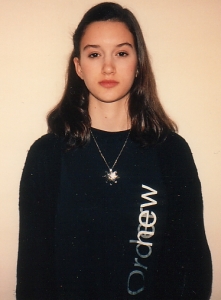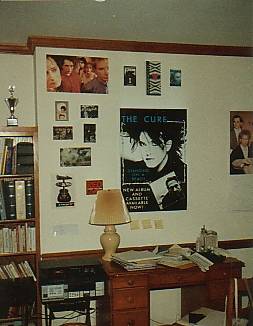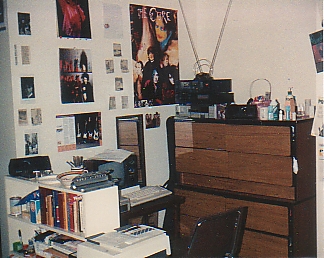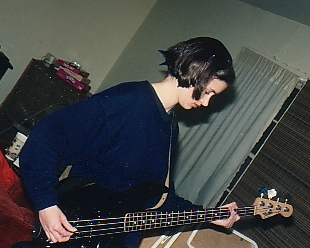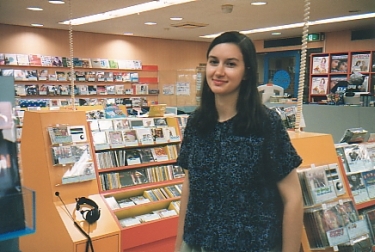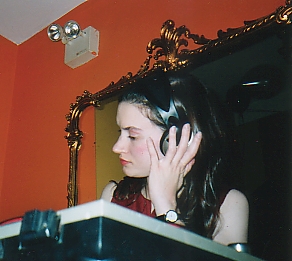I first became seriously interested
in music in the fall of 1988, when I was in ninth grade. I moved from
a fanatical devotion to R.E.M. (which lasted until I saw R.E.M. in concert
in April 1989 and was put off by singer Michael Stipe's attitude) to a
fanatical devotion to the Cure (which lasted until the release of their
atrocious remix album Mixed Up, unfortunately the only Cure album
I ever bought on CD rather than cassette).
I really liked the Cure's often-shimmery
guitar, their song arrangements, and Robert Smith's distinctive voice.
While I liked other New Wave bands, such as Siouxsie and the Banshees,
Bauhaus, and New Order, I also liked artists from other genres, such as
the Replacements, World Party, the Church, Midnight Oil, the Pixies, the
Dead Milkmen, Sinéad O'Connor, Jane's Addiction, and Sonic Youth.
At right: Lookin' sullen, 10th grade. Note the New Order T-shirt.
